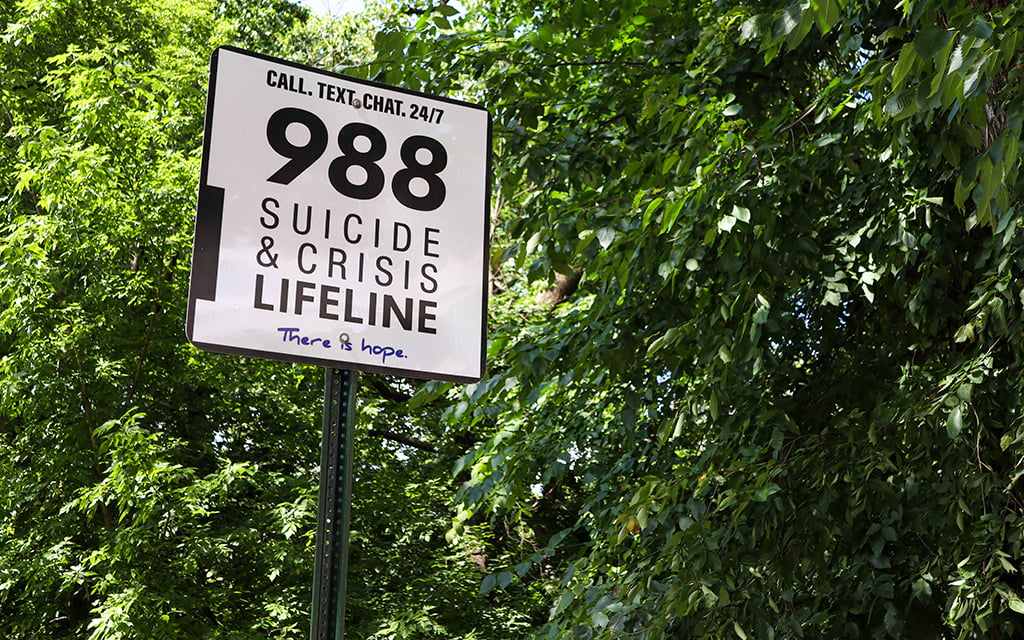WASHINGTON – The 988 crisis hotline went live nationwide two years ago, replacing a hard-to-remember 800 number so that people considering suicide could more easily reach out for help.
But unlike 911 calls, which go to the nearest dispatch center, calls to 988 are connected to a center in the caller’s area code.
With 80% of those calls coming from cell phones, people in crisis often end up speaking with a volunteer or counselor thousands of miles away who has no way to send help.
“If they call 988 and they get a call center in another state, then you’ve kind of broken that trust,” said Margie Balfour, a psychiatrist with Connections Health Solutions in Tucson, adding that the concerns are bad enough that “we’ve actually kind of hesitated really pushing people to call 988.”
Federal regulators are working on a fix.
In April, the FCC voted to require wireless companies to route 988 calls to the crisis center closest to where a caller actually is.
“For many people the area code on our phones no longer matches the place where we live. That means if you have a phone number from Maryland, but moved to California, and dialed 988 you would still be routed to a center in Maryland,” FCC Chairwoman Jessica Rosenworcel said in a statement. “We can save more lives by getting more people connected to resources nearby.”
The wireless industry is on board. So are Vibrant Emotional Health, the nonprofit organization that administers the 988 system, the National Association of Counties and dozens of advocacy groups.
Verizon and other carriers have been testing ways to shift to georouting.
Cie Culbertson, a sophomore at Arizona State University from Iowa, ran into issues when she called 988 in March.
She has a 515 number, and the person who picked up was at an Iowa crisis center where counselors had no information on resources available in Tempe.
“It was just a lot of waiting,” Culbertson said. “I don’t remember exactly how long I waited, but it was a really long time, and I actually hung up because I was too tired of waiting.”
After numerous calls, she was eventually transferred to an Arizona center where a counselor pointed her to a behavioral health clinic in Tempe, though the wait there was seven hours due to understaffing, she recounted.
Congress approved funding for a suicide-prevention hotline in 2001. The U.S. Substance Abuse and Mental Health Services Administration (SAMHSA) launched the hotline in 2005 using the number 1-800-273-8255 (TALK). It handled 46,000 calls in the first year.
In 2020, Congress directed the FCC to assign 988 as the universal number for the hotline. The two-year anniversary of that launch is July 16.
The hotline now gets 5 million calls a year, according to SAMHSA.
About 200 local crisis centers nationwide are reachable by call, text and chat. A Spanish-language option was added a year ago.
But the area code-based system remained, stemming from privacy concerns that emergency responders and mental health advocates now say are outweighed by the need for urgency.
“We’ve had instances where we have somebody from upstate New York with an Arizona area code call 988. … We were not able to quickly identify mobile crisis capabilities or a walk-in center where they could be taken to,” said Justin Chase, CEO of Solari Crisis and Human Services, a Tempe-based nonprofit that touts one of the largest crisis call centers in the country.
Kristina Sabetta, executive director at National Alliance on Mental Illness Valley of the Sun, which covers Maricopa County, said it’s hard enough to connect people to resources when they’ve reached the right crisis center.
“Folks are calling 988, which is awesome. We want them to call, but they’re not being referred to their local affiliate,” she said.
NAMI also supports the FCC’s plan to switch to a georouting system – finding the caller’s general location by identifying the nearest cell tower.
That’s less precise than geolocation, which is used by 911 operators to dispatch police, firefighters and ambulances.
This distinction has been critical for advocates in building support for the change.
A 2023 survey conducted by CrisisCrowd found that hotline counselors across the country are frustrated at how hard it is to connect callers with local resources even when the caller is in the area.
Those resources include mobile crisis teams – social workers, peer responders, paramedics and sometimes also police.
Counselors interviewed by Cronkite News say that frustration is compounded when the call comes from far away. These situations can be frightening, they say.
“We are not equipped with the resources for the entire United States,” said Maryam, who has worked in call centers in New Mexico and Maryland, and asked to be identified only by her first name. “It’s most dangerous when the area code doesn’t match up and we need a dispatch.”
The goal is to try and establish rapport with the caller and work out a safety plan with them before dispatching any team, she said. But sometimes a caller hangs up during a crisis, and counselors have no idea where they are.
“The real problem is figuring out who to call,” Maryam said. “You’re going to end up in the wrong state, sometimes wrong city, wrong county. It’s all over the place.”.
Rachel Levy, a former crisis counselor in Oregon, agreed that georouting would improve the crisis care network.
“Mobile crisis can be a really helpful resource in certain situations,” she said.
But standards differ around the country, she said, and there’s no way to know what sort of mobile crisis team is available in another state.
Levy also noted that some people call these crisis lines more than once. Being routed to their local center could provide continuity and better care, she said. And some frequent callers use burner phones.
“I definitely think there needs to just be better training across the board on finding resources,” Levy said.
If you or someone you know is struggling with thoughts of suicide, the 988 Suicide & Crisis Lifeline is available 24/7. Call or text 988.


